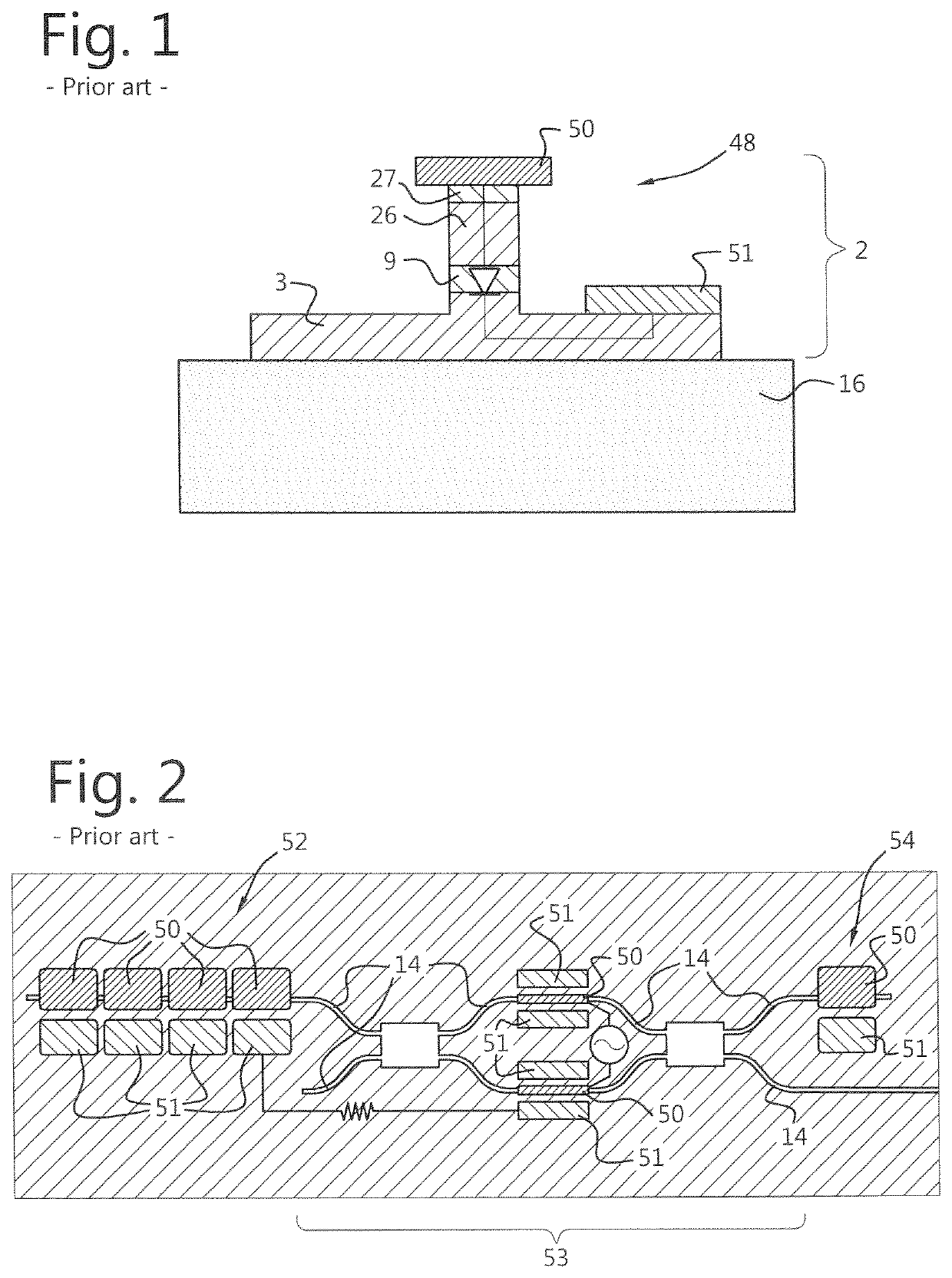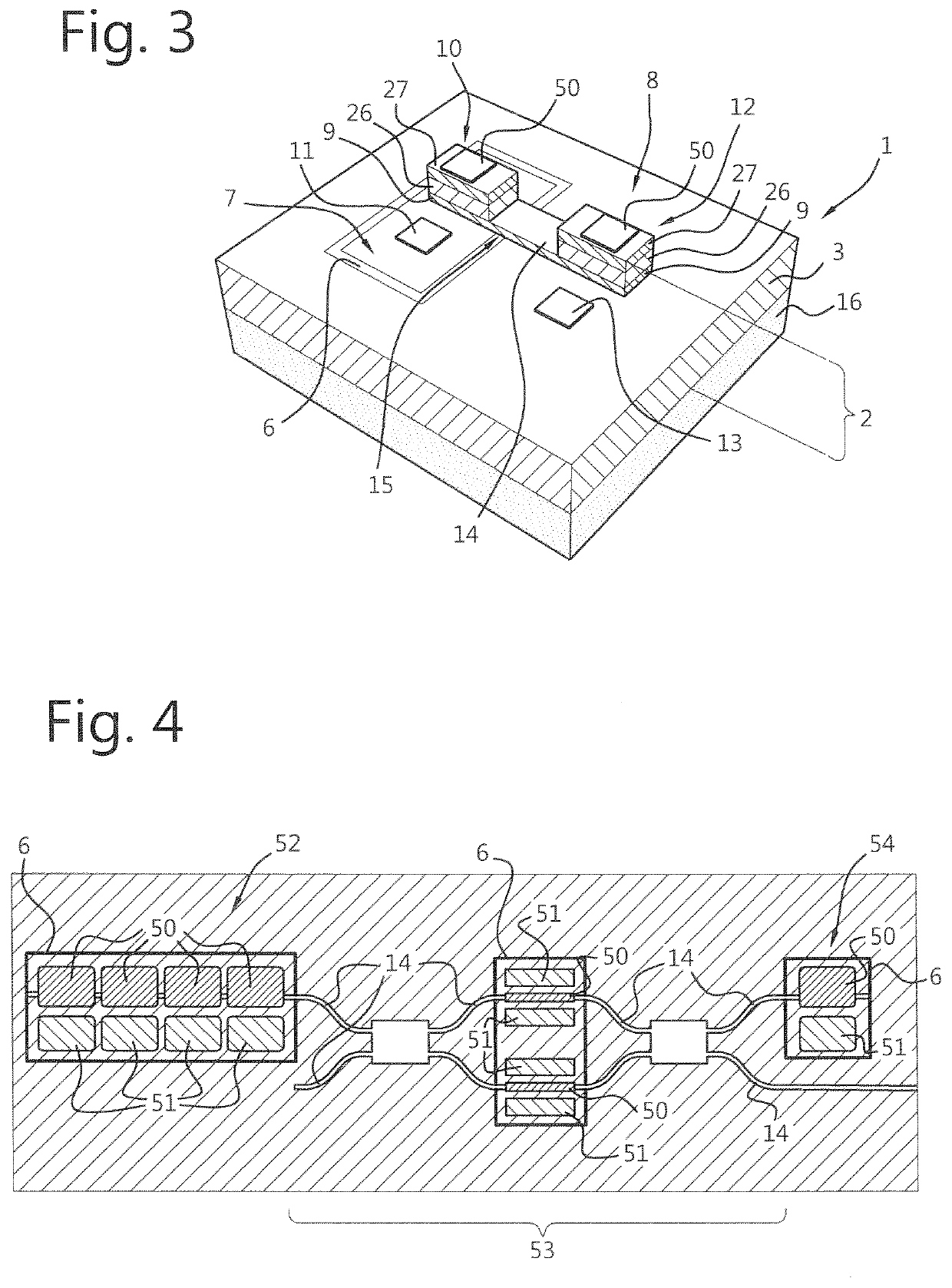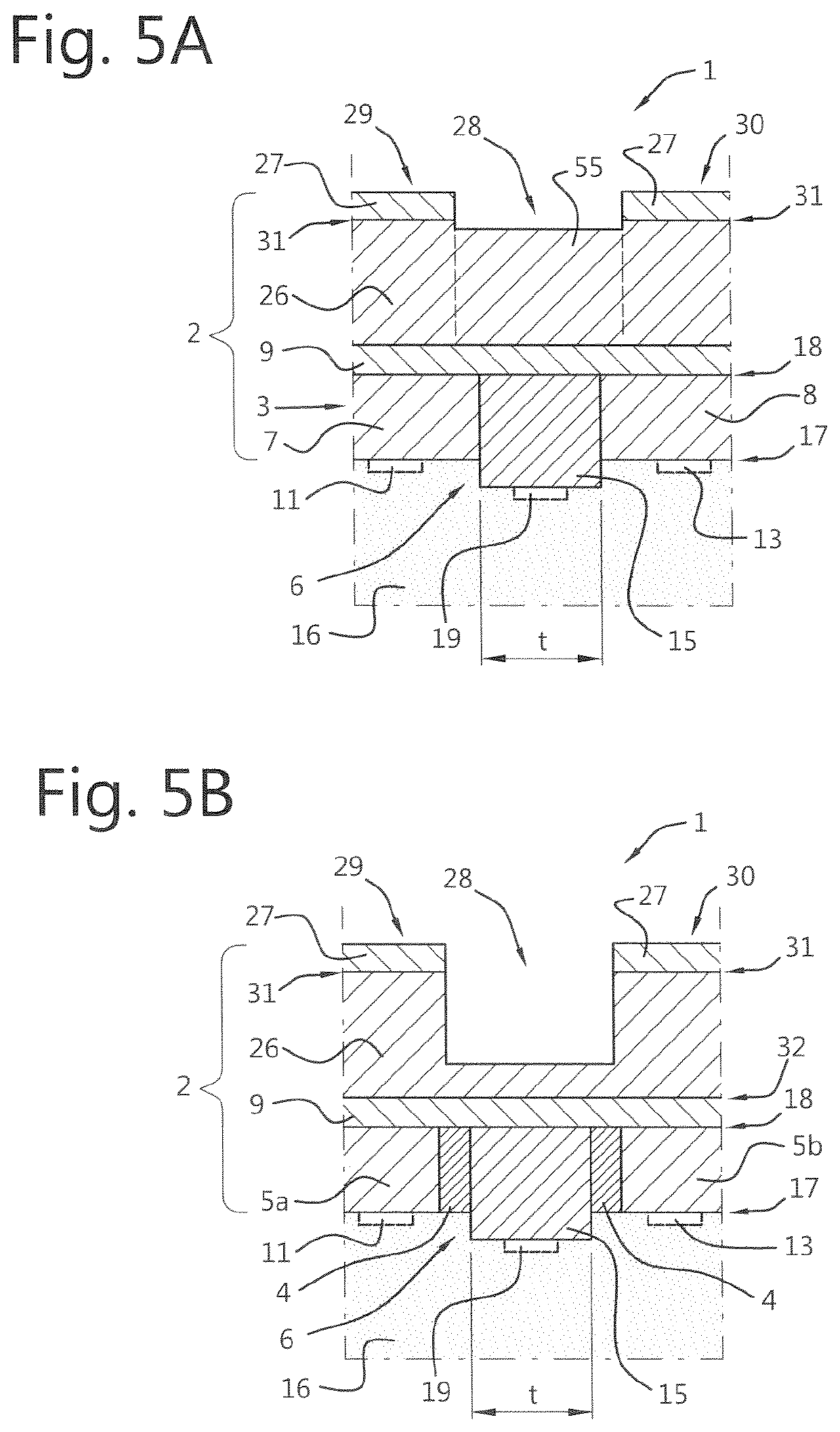Photonic integrated circuit having improved electrical isolation between n-type contacts
a photonic integrated circuit and electrical isolation technology, applied in the field of photonic integrated circuits, can solve the problems of inability to remove the n-type doped inp-based semiconductor material underneath the passive optical waveguide, the n-type doped inp-based semiconductor material cannot be removed, so as to achieve the effect of improving the n-isolation and reducing the extra optical loss of the passive optical wav
- Summary
- Abstract
- Description
- Claims
- Application Information
AI Technical Summary
Benefits of technology
Problems solved by technology
Method used
Image
Examples
first embodiment
[0102]FIG. 8A shows the result of first and second process steps of the method. In the first process step a substrate 16 is provided that comprises one of semi-insulating indium phosphide (s.i.-InP), p-type doped indium phosphide (p-InP) and n-type doped indium phosphide (n-InP) that is compensated using iron (Fe) atoms to provide at least a semi-insulating surface layer. In the second process step, an n-type doped contact layer 3 comprising indium phosphide is grown on top of the substrate 16 using any one of the conventional epitaxial growth techniques MOCVD, MOVPE and MBE.
[0103]FIG. 8B shows the result of third, fourth and fifth process steps of the first embodiment of the method. In the third process step a masking layer 34 is deposited on top of said n-type doped contact layer 3. The masking layer 34 comprising at least one of a silicon oxide (SiOx) and a silicon nitride (SiNx). In the fourth process step a lithographic process followed by a first selective etching process are ...
second embodiment
[0108]FIG. 9A shows the result of first and second process steps of the method. In the first process step a substrate 16 is provided that comprises one of semi-insulating indium phosphide (s.i.-InP), p-type doped indium phosphide (p-InP) and n-type doped indium phosphide (n-InP) that is compensated using iron (Fe) atoms to provide at least a semi-insulating surface layer. In the second process step, a non-intentionally doped layer 4 comprising indium phosphide is grown on top of the substrate 16 using any one of the conventional epitaxial growth techniques MOCVD, MOVPE and MBE.
[0109]FIG. 9B shows the result of third, fourth, and fifth process steps of the second embodiment of the method. In the third process step, a first masking layer 38 is deposited on top of and completely covering the non-intentionally doped layer 4. The first masking layer 38 comprises at least one of a silicon oxide (SiOx) and a silicon nitride (SiNx). In the fourth process step a first lithographic process fo...
PUM
| Property | Measurement | Unit |
|---|---|---|
| width | aaaaa | aaaaa |
| width | aaaaa | aaaaa |
| width | aaaaa | aaaaa |
Abstract
Description
Claims
Application Information
 Login to View More
Login to View More - R&D
- Intellectual Property
- Life Sciences
- Materials
- Tech Scout
- Unparalleled Data Quality
- Higher Quality Content
- 60% Fewer Hallucinations
Browse by: Latest US Patents, China's latest patents, Technical Efficacy Thesaurus, Application Domain, Technology Topic, Popular Technical Reports.
© 2025 PatSnap. All rights reserved.Legal|Privacy policy|Modern Slavery Act Transparency Statement|Sitemap|About US| Contact US: help@patsnap.com



